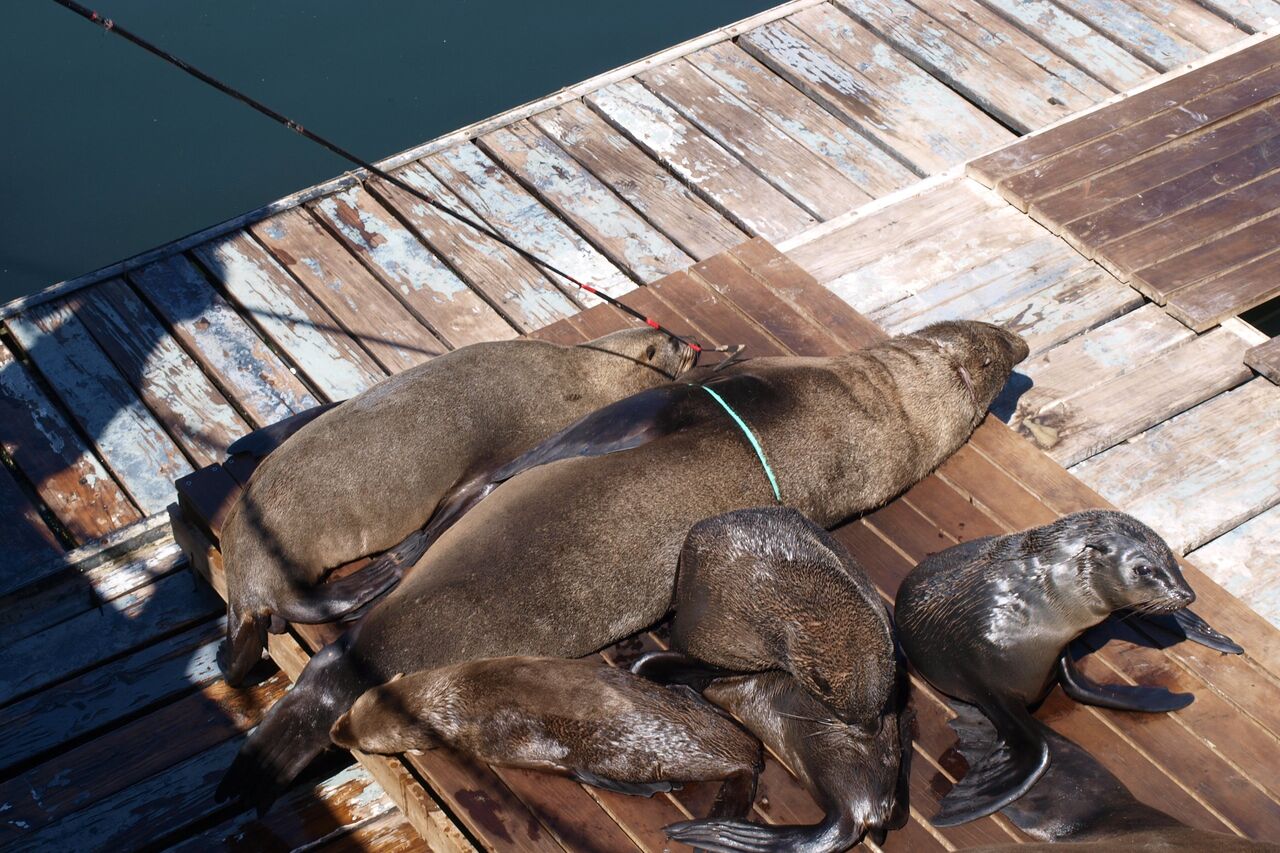Plastic pollution: Our position statement
The Two Oceans Aquarium and Foundation are uniquely positioned to achieve impact through the significant number of people we reach, and this impact is further amplified by our location in the V&A Waterfront.
Our position statement on plastic pollution will guide our actions in response to the four major threats to the ocean and will support our efforts to galvanise individual, interpersonal, community, organisational action or support for multistakeholder processes and policy change.
Why we are taking action
Problem statement
Plastic pollution in our ocean is a global issue and poses significant ecological and health threats not only to marine life but to human life as well.
Plastic pollution impacts marine wildlife through entanglement, ingestion and degrades marine habitats. It results in economic losses to fisheries, poses a navigational hazard, and impacts public health and safety through accumulation in the food web.
Today, almost every species group in the ocean has encountered plastic pollution, with scientists observing negative effects in almost 90% of assessed species.
If all plastic pollution inputs stopped today, marine microplastic levels would still more than double by 2050, and some scenarios project a 50-fold increase by 2100.
Without action, the annual flow of plastic into the ocean will nearly triple by 2040, to 29 million metric tons per year (range: 23 million-37 million metric tons per year), equivalent to 50 kg of plastic per metre of coastline worldwide (Breaking the Plastic Wave).
Plastic facts:
- Plastic may be deposited on the beach, float on the surface of the ocean, float within the water column or be deposited on the seafloor.
- Plastic cannot break down, biodegrade, or become part of the natural system again.
- Instead, plastic breaks up infinitely – a single-use water bottle will break into smaller and smaller pieces until even plankton mistakes it for food.
- Studies have revealed microplastics in drinking water, our food, and even in human breast milk, in human blood and in the human brain. Marine life and humans are in grave danger.
- Plastic production is increasing.
- Plastic production contributes significantly to climate change.
- Globally, only 6% of all plastics ever produced have been recycled.
Plastic in South Africa
- Most plastic on the South African coast comes from local land-based sources, centred around urban areas.
- Stormwater outlets are a significant source of litter on beaches.
- South Africa has an established plastic value chain and high per capita plastic consumption (32–41kg compared to the global average of 29 kg).
- Packaging accounts for 52% of plastic use, followed by the construction and agricultural sectors.
- Each year, 488 kilotonnes (kt) of plastic pollute the environment.
- Plastic contributes to air pollution through open burning (275 kt), land pollution (145 kt) and aquatic (freshwater and marine) pollution (68 kt).
- In 2020, South Africa generated 1 546 kilotonnes (kt) of plastic waste.
- Of this, 1 350 kt was collected and 196 kt uncollected. Of the collected plastic, only 301 kt – 22% of the total collected plastic waste – was recycled (Stafford et al. 2022). In 2017, 51% of the reported collected tonnage of paper and packaging, including plastic, was collected by the informal sector (Godfrey 2021).
- While the effects of plastic in the ocean and on species is increasingly being acknowledged and researched, the impact of plastic on human health is of immediate and grave concern. Micro and nano-plastics have now been found in human brains, liver, blood, kidneys and breast milk with unknown consequences. Plastic pollution in our environment is no longer only an environmental crisis, it is also a health one.
Two Oceans Aquarium and Foundation position statement
The Two Oceans Aquarium and Foundation support a “One Health” approach in which healthy oceans, forests, rivers and soil, all free of plastic, support human health.
Corporations and industry need to take ownership of their role in producing plastic, while consumers must understand the impact of their demand.
What we are doing
The Two Oceans Aquarium and Foundation see firsthand the impact of plastic on marine life through our work with turtles, seals, and seabirds.
Every year, many of the stranded turtles undergoing rehabilitation in the Turtle Conservation Centre have consumed plastic, often causing death. The types of plastic ingested include bags, balloons, microplastics and even plastic fibres.
Cape fur seals in the V&A Waterfront are regularly rescued by our Marine Wildlife team with plastic entanglements around their necks. The types of plastic entanglements include box bands, fish strops, plastic bags and fishing line.

We have a unique role to play by inspiring and empowering people to see the connections between their actions and the health of the ocean, and to provide practical actions to lighten our footprint, including leading by example.
- We work to position the Aquarium as a leading single-use plastic-free showcase.
- We support the principles of the SA Plastics Pact
- We collaborate with the V&A Waterfront to assist in achieving its plastic targets.
- We engage with government, municipalities, retailers and corporates, the plastics industry, etc., to make the necessary changes with regards to legislation, design, manufacture and production of alternatives to single-use plastics and to promote the circular economy.
- We support research efforts related to plastic and plastic alternatives.
- We encourage behaviour change and action at individual, interpersonal, community, organisational and governmental levels on behalf of the oceans.
- We invest in, develop and implement education and training programmes and resources.
- We measure, evaluate and research the efficacy of our approaches.
- We are guided by peer-reviewed scientific evidence and community/indigenous ways of knowing.
References
- https://www.pewtrusts.org/-/media/assets/2020/07/breakingtheplasticwave_report.pdf
- https://wwfafrica.awsassets.panda.org/downloads/wwf-plastic-phase_out-factsheet-7nov.pdf
- https://wwfafrica.awsassets.panda.org/downloads/web-wwf-plastic-phase-out-report.pdf
- https://www.thebeachcoop.org/on-plastic-pollution/
- https://sst.org.za/wp-content/uploads/2024/08/SST-Plastic-Free-Seas-Guidebook_FINAL.pdf
- Microplastics found in human blood for first time
- Microplastics found in human breast milk for the first time
- Microplastics in drinking water
- Plastic planet: How tiny plastic particles are polluting our soil